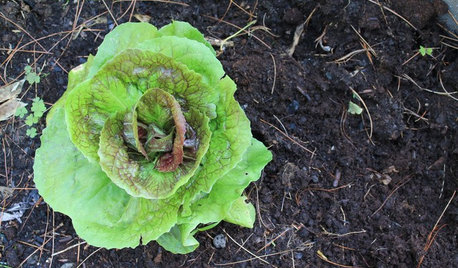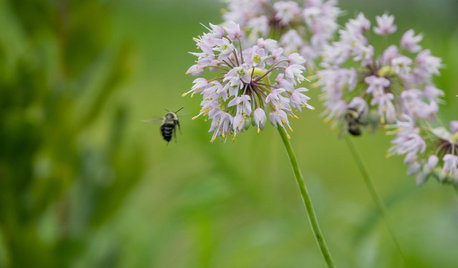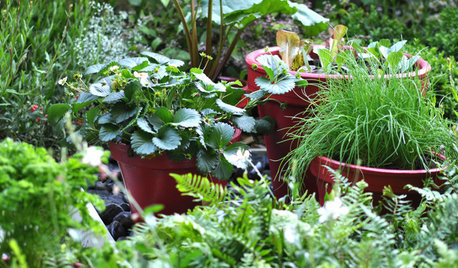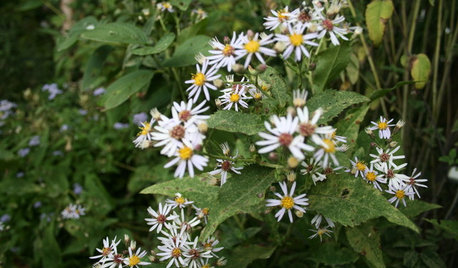yellow rose leaves, clay soil, please advise me, soil experts...
luxrosa
10 years ago
Featured Answer
Sort by:Oldest
Comments (15)
roseseek
10 years agojerijen
10 years agoRelated Discussions
Need tips dealing with extra heavy clay soil please
Comments (10)I'm not trying to advertise any sort of product here, but I've used a mantis tiller in the past and it does very well at digging through hard clay soil. The soil will obviously have to be amended with some type of organic matter, and the deeper into the soil you get the better. Remember that these plants will want to be as big as possible, and the deeper the roots can go the larger the plant will be. When you're ready to amend your soil (I suggest waiting until fall to do this), do some heavy weeding beforehand. If you try to till the weeds under, they'll come back even bigger after the soil is amended. Anyways, in the fall, get as many bags of leaves as you can and dig them into your soil with the cultivator. In spring, you'll have some good soil for planting....See MoreCover crop for clay soil - please advise
Comments (12)You can till clay, if you do it at the right time. Tilling too wet clay makes for major problems and trying to till too dry clay is about immpossible. Then, once the clay has enough organic matter in it it probably would not need to be tilled again unless someone walked on it or other wise compacted it. These simple soil tests may be of some help. 1) Structure. From that soil sample put enough of the rest to make a 4 inch level in a clear 1 quart jar, with a tight fitting lid. Fill that jar with water and replace the lid, tightly. Shake the jar vigorously and then let it stand for 24 hours. Your soil will settle out according to soil particle size and weight. A good loam will have about 1-3/4 inch (about 45%) of sand on the bottom. about 1 inch (about 25%) of silt next, about 1 inch (25%) of clay above that, and about 1/4 inch (about 5%) of organic matter on the top. 2) Drainage. Dig a hole 1 foot square and 1 foot deep and fill that with water. After that water drains away refill the hole with more water and time how long it takes that to drain away. Anything less than 2 hours and your soil drains� too quickly and needs more organic matter to slow that drainage down. Anything over 6 hours and the soil drains too slowly and needs lots of organic matter to speed it up. 3) Tilth. Take a handful of your slightly damp soil and squeeze it tightly. When the pressure is released the soil should hold together in that clump, but when poked with a finger that clump should fall apart. 4) Smell. What does your soil smell like? A pleasant, rich earthy odor? Putrid, offensive, repugnant odor? The more organic matter in your soil the more active the soil bacteria will be and the nicer your soil will smell. 5) Life. How many earthworms per shovel full were there? 5 or more indicates a pretty healthy soil. Fewer than 5, according to the Natural Resources Conservation Service, indicates a soil that is not healthy....See MoreNeed soil recipe for California clay, please. Jeri? Cass?
Comments (16)Tessie (Melissa) in CA with sandy/loamy soil once posted on yellowing of her roses due to alfalfa. Google that in Roses Forum and you'll see "Rethinking alfalfa in CA ..." Since Lux has heavy clay, I'm sharing with her my experience with alfalfa in heavy clay: 1) Mendocino is right, alfalfa is a disaster in the hole. I don't have luck top dressing either. Plants' roots don't breathe well in my compact & sticky clay, and it doesn't help that alfalfa meal gunks up. Stuff decomposes very slow in my wet and rainy climate. But alfalfa is great in Ingrid's loose decomposed granite soil, and in her CA hot & dry climate which decomposes things put on top fast. 2) For my heavy clay, I don't fertilize my 26 trees, yet they are taller than 2-story building. I checked with links on nutrient deficiencies, all stated that unless the pH is very acidic, or if the soil is very sandy, nitrogen is NOT needed for in-the ground plants. But nitrogen is needed for pots due to leaching out. 3) I gave my white pine blood meal, NPK 12-0-0, fast release, didn't green up after 1 month, so I put alfalfa meal on top ... that gunked up, and my pine tree became more yellowish. Roots need oxygen to breathe. We aerate our lawn with machine that punch holes in the ground, and pull up plugs... the year with aeration has the greenest lawn, no fertilizer. The neighbors with professional fertilization many times a year, still have yellowish lawn, since they don't aerate their lawn. 4) Last year I gave William Shakespeare high nitrogen ACID chemical fertilizer, NPK 10-5-4, plus chicken manure. I also topped him with alfalfa meal. He was still pale and yellowish, due to alfalfa meal gunking on top of my sticky and heavy clay. This year I give none of my roses nitrogen nor alfalfa ... they were pale in freezing spring, but now all are dark green, see below picture of Marie Pavie and Mary Magdalene. This post was edited by Strawberryhill on Tue, Jun 25, 13 at 22:01...See MoreRoses Out, Back in. Lost Good Soil. Advise Please
Comments (8)I just did this too. I dug down four feet to try and find soil. Instead all i found was sugar sand. I created a four foot deep, five feet wide by 90 feet long. I put in cardboard to keep the horse manure from washing through the sand and then filled the holes with composted manure. Then I bought some miracle grow gardwn soild that I am going to mix into the planting holes. I hope to keep amending this year after year. Don't know about clay, but I am sure amending the soil will hep....See Moreroseseek
10 years agojerijen
10 years agostrawchicago z5
10 years agocatspa_NoCA_Z9_Sunset14
10 years agoannesfbay
10 years agoroseseek
10 years agocatspa_NoCA_Z9_Sunset14
10 years agoannesfbay
10 years agoroseseek
10 years agoluxrosa
10 years agoluxrosa
10 years agoroseseek
10 years ago
Related Stories

GARDENING GUIDESHow to Stop Worrying and Start Loving Clay Soil
Clay has many more benefits than you might imagine
Full Story
FARM YOUR YARDHow to Get Good Soil for Your Edible Garden
The nutrients in your soil feed the plants that feed you. Here are tips on getting it right — just in time for planting season
Full Story
WINTER GARDENINGPruning Secrets for Exquisite Roses
Encourage gorgeous blooms year after year with this time-tested advice on how to prune your rosebush in winter for health and shape
Full Story
FALL GARDENING5 Ways to Put Fall Leaves to Work in Your Garden
Improve your soil and yard the organic way with a valuable garden booster that grows on trees
Full Story
GARDENING GUIDES9 Clay-Busting Native Flowers for Summer Sun
These plants survive and even thrive in tough clay soil east of the Rocky Mountains
Full Story
GARDENING GUIDESGreat Design Plant: Silphium Perfoliatum Pleases Wildlife
Cup plant provides structure, cover, food and water to help attract and sustain wildlife in the eastern North American garden
Full Story
GARDENING GUIDES5 Favorite Yellow Roses for a Joyful Garden
Make 'cheery' the name of your garden game when you order your roses sunny side up
Full Story
FARM YOUR YARDHow to Grow Vegetables in Containers
Get glorious vegetables and fruits on your patio with a pro’s guidance — including his personal recipe for potting mix
Full Story
SUMMER GARDENINGHouzz Call: Please Show Us Your Summer Garden!
Share pictures of your home and yard this summer — we’d love to feature them in an upcoming story
Full Story
GARDENING GUIDES6 Native Ground Covers for Tough, Dry Spots
Sun beating down on your sandy gravel? Thick shade darkening your clay soil? There’s a ground cover here for you
Full StorySponsored









michaelg